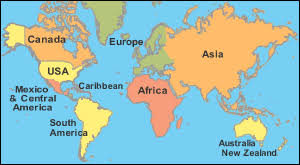Japan foreign arrivals set new six-month record

TOKYO – The government’s goal of bringing the annual number of foreign tourists to 10 million appears to be moving closer to reality, as the estimated number of foreigners who visited Japan set a new six-month record at about 4.95 million in January-June this year, up 22.8 percent from the same period in 2012.
The increase is believed to be partly due to the increasing affordability of shopping and eating out in Japan, and to the government’s promotional campaign.
The annual number of overseas tourists is the total of foreign travelers who enter Japan legally, a figure tallied by the Justice Ministry, minus the combined number of people with a permanent visa or who are married to a Japanese person. The tally of foreign visitors also includes people who temporarily enter the nation after going through passport control while in transit to another country.
Representatives of foreign companies and their family members, as well as overseas students, are counted as tourists. Airplane and ship crews are not included even if they enter the country.
The yearly number of overseas tourists exceeded 8 million for the first time in 2007, but since then, the number has swayed between 6 million and more than 8 million. In 2008, reduced personal spending as a result of the financial crisis pushed the tourism down, as did the Great East Japan Earthquake in 2011.
Although Japan saw its second-highest level of foreign tourists ever, 8.36 million, in 2012, the number of tourists from such countries as France, Germany, Singapore and South Korea fell in the first half of that year because of concerns over the nuclear crisis at Tokyo Electric Power Co.’s Fukushima No. 1 nuclear power plant.
Inviting overseas tourists to Japan is part of the government’s growth strategy, and it has held campaigns to invite foreign sightseers to disaster-hit areas and other places at international events and business conferences at home and abroad. These include the annual meeting of the International Monetary Fund and the World Bank Group, which was held in Tokyo in October.
The government’s strategy has been boosted by the yen, which has rapidly depreciated since Prime Minister Shinzo Abe returned to office last year. Anxiety over the nuclear crisis has also subsided.
Moreover, the government has relaxed the visa requirements for citizens of five Southeast Asian countries, including visa exemptions for tourists from Malaysia and Thailand from July 1. Requirements were relaxed at an earlier date for Singaporeans.
In South Korea, the number of foreign tourists rocketed over 10 million thanks largely to the relaxation of visa regulations. Now the conditions are more or less the same in Japan, which has been a step behind in accepting foreign tourists. The government has changed its stance to opening up the country and is willing to receive more tourists from Southeast Asian countries, whose economies have been growing steadily.
Japan owes a great deal of its popularity to anime and other cultural influences.
At the Ninja Museum of Igaryu in Iga, Mie Prefecture, the number of foreign visitors in January-June jumped to 7,094, an increase of 77 percent from the same period last year. About 80 percent of the audience at the museum’s ninja show are foreigners.
Ninja is one of the Japanese words that have been accepted mainly in English-speaking countries and is a leading example of “Cool Japan.”
Another example is that in China and South Korea, Japanese anime such as the popular “Naruto” and “Ninja Hattori-kun” are broadcast on TV and are very popular among children and young people.
“Shuriken ninja stars are so heavy! I was surprised because in anime they throw them so easily,” said an excited 14-year-old middle school girl from the city of Wuhan, China, who was visiting the museum in July as part of a school trip.
Many foreign visitors are also drawn to “medical tours,” which enable participants to be diagnosed at Japan’s cutting-edge medical facilities.
Since 2009, Nippon Travel Agency has been marketing cancer screening tours to wealthy people in China for early detection of the disease. Participants stay in Japan for a week on average. They receive a one-day cancer screening at a medical institution in Osaka and enjoy sightseeing for the rest of their stay.
Although the tour is rather expensive at about 1 million yen per person, about 100 people applied last fiscal year.
“There are many Chinese people who want to receive medical screenings in Japan, where the level of technology is advanced,” an official at the agency in charge of the tour said.
The estimated number of foreigners who came to Japan for medical purposes in 2012 was about 70,000. Although they accounted for less than 1 percent of all the visitors during the same year, the Japan Tourism Agency has high hopes for this niche of the market.“It will be one of the attractions for foreign people to choose Japan as their travel destination,” an agency official said.- japan-news.com














